International team unravels the chickpea genome
- Published Date
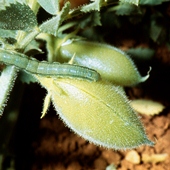
Scientists have successfully completed the draft genome sequence of chickpeas (Cicer arietinum), reported in an article published today in Nature Biotechnology. The study also describes the genome sequence of 90 cultivated and wild chickpea genotypes from ten countries. This is a veritable treasure trove of genomic resources, and paves the path for modern breeding to improve this important food crop – a great boost for chickpea farmers in the developing world.
Media Release – 28 January 2013
International team unravels the chickpea genome
New genomic resources will help create better chickpea varieties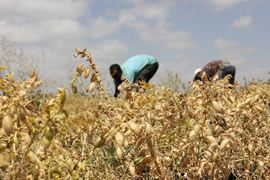 Scientists have successfully completed the draft genome sequence of chickpeas (Cicer arietinum), reported in an article published today in Nature Biotechnology. The study also describes the genome sequence of 90 cultivated and wild chickpea genotypes from ten countries. This is a veritable treasure trove of genomic resources, and paves the path for modern breeding to improve this important food crop – a great boost for chickpea farmers in the developing world.
Scientists have successfully completed the draft genome sequence of chickpeas (Cicer arietinum), reported in an article published today in Nature Biotechnology. The study also describes the genome sequence of 90 cultivated and wild chickpea genotypes from ten countries. This is a veritable treasure trove of genomic resources, and paves the path for modern breeding to improve this important food crop – a great boost for chickpea farmers in the developing world.
An auspicious start to 2013 in the genomics world, this study reveals more than 28,000 genes of chickpeas, which – together with an array of genotypes – provides millions of genetic markers. The initiative is summarised in the Nature Biotechnology article published today entitled Draft genome sequence of chickpea (Cicer arietinum) provides a resource for trait improvement. ![]() Download PDF
Download PDF
Chickpeas are an all-important staple for food security as a principal provider of protein, and are the world’s second most widely grown legume. They also enhance soil health, by fixing nitrogen and adding organic matter, meaning that farmers can intercrop chickpeas with other plants such as cereals, which benefit from the improved soil. As a result, “Farmers will not have to apply as much fertiliser or fungicides, which both reduces costs for the farmer and helps the environment,” explains Dr Paul Kimurto of Egerton University, Kenya, who is Lead Scientist for the Kenya component on improving chickpeas in the Generation Challenge Programme's (GCP) Legumes Research Initiative.
Underrated and alone, but with massive potential…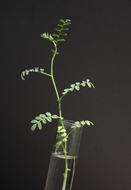 Chickpeas were formerly termed ‘orphan crop’, as they have a narrow genetic base – in part due to domestication, as only preferred qualities are carried on into the next generation. This, coupled with the lack of genomic data, meant that “Molecular breeding and improvement of chickpeas have been hindered by lack of genome sequence data, compared to other crops,” explains Prof Suk-Ha Lee of the Department of Plant Science, College of Agriculture and Life Sciences, Seoul National University, Korea.
Chickpeas were formerly termed ‘orphan crop’, as they have a narrow genetic base – in part due to domestication, as only preferred qualities are carried on into the next generation. This, coupled with the lack of genomic data, meant that “Molecular breeding and improvement of chickpeas have been hindered by lack of genome sequence data, compared to other crops,” explains Prof Suk-Ha Lee of the Department of Plant Science, College of Agriculture and Life Sciences, Seoul National University, Korea.
Prof Noel Ellis of the Institute of Biological, Environmental & Rural Sciences in Aberystwyth University, UK, concurs, adding: “This international study transforms the state of knowledge; it is not only a draft genome sequence, but also describes the genomes of 90 distinct chickpea types telling us much about the history of domestication and selection in this species. This wealth of genomic data now facilitates the development of breeding tools, and opens the door to many precise studies of gene function.”
One giant step…over the milestones…
Findings are bound to transform the fortunes of chickpea research, and those of chickpea farmers worldwide, particularly those who have had little choice but to plant low-yielding varieties, in addition to the devastations of drought and crop disease. Hardest hit are farmers in semi-arid environments with poor soils, poor agricultural infrastructure, and limited access to irrigation and fertilisers.
Prof Tim Close, Geneticist at the Department of Botany and Plant Sciences at the University of California, Riverside (USA) observes, “We now live in the light of the ‘genome era’. The article marks a major step forward, not only for chickpeas but for legumes in general.” The draft genome sequence serves as a ‘family tree’ for legumes, helping to clarify the roles that certain gene families have played in the evolution and domestication of chickpeas, and identifying genes for agronomically important traits to enhance other legumes.
Come together – over chickpeas…collaboratively
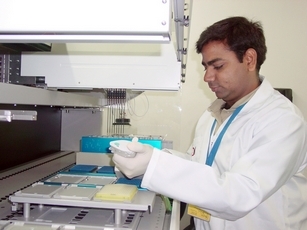
Dr RK Varshney in the lab.
So how did this breakthrough come through? Dr Rajeev K Varshney, the leader of the chickpea genome sequencing project, explains that an international like-minded group of about 10 scientists came together in July 2010 at the Vth International Conference on Legume Genetics and Genomics in Asilomar, USA. “We all agreed it was high time that we had a genome sequence for chickpeas.” Dr Varshney is also GCP’s Comparative and Applied Genomics Theme Leader, coordinator of the International Chickpea Genome Sequencing Consortium (ICGSC) and Director of the Center of Excellence in Genomics at the International Crops Research Institute for the Semi-Arid Tropics (ICRISAT). The sequencing project was partially funded by GCP.
Dr Varshney is elated to be part of this international Dream Team, comprising 49 scientists from 23 organisations in 10 countries, “I feel privileged and honoured to work with this group of scientists whose dedication made it possible to generate the genome sequence of chickpeas. Now it will be very important to link this genomic information to trait phenotypes, in order to apply the genomic information to breeding.”
This leads us to the next step: how this vast collection of resources will be put to
practical use in breeding. Prof Andreas Graner, Managing Director of the Leibniz Institute of Plant Genetics and Crop Plant Research in Germany, and a member of GCP’s Executive Board, explains, “The elucidation of the evolution of the chickpea genome and its domestication history now represent the framework to systematically apply DNA-sequence-based approaches to chickpea breeding. The present findings are a stepping stone to turn conventional chickpea breeding into a predictive science.”
Setting the scene
Prof Close elaborates on the context, “There has been a paradigm shift in biological research during the past few years, driven largely by a more than 2,000-fold reduction in the cost of DNA sequencing, and simultaneous improvements in computational methods. The rise of model systems has completely reshaped the landscape: each organism can be studied directly, and its significance determined by economic, social and ecological relevance. Here, we have an example of an international, culturally diverse group of individuals who have worked together to bring this paradigm shift firmly into the realm of a crop of major importance for world food security. It is inspiring!”
Considering today’s environmental challenges, particularly in the semi-arid regions, Dr David Bergvinson, Senior Programme Manager, Science & Technology, Global Development at the Bill & Melinda Gates Foundation, adds, “We look forward to seeing how researchers around the globe will harness this resource to increase chickpea productivity against the backdrop of climate change in the developing world.”
Hopes for the future…
What are the possible impacts of this finding? Dr Jean-Marcel Ribaut, GCP’s Director, explains, “With this new genome sequencing data, chickpeas – a crop of unquestionable nutritional and agricultural importance, especially in developing countries – now have the opportunity to benefit from modern breeding. This will yield new improved varieties to assist farmers in resource-poor communities, by increasing food security, generating more income and therefore improving their livelihoods in a significant way.”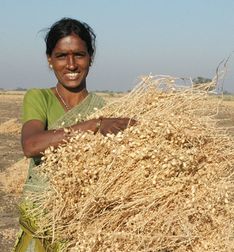
Renowned agricultural scientist and Member of Indian Parliament, Prof MS Swaminathan says, “I would like to compliment the excellent scientific work done by Rajeev Varshney of ICRISAT and his colleagues in developing a high-quality genome sequence of chickpea. I am confident that the knowledge provided by this study will help accelerate the improvement of this crop through marker-assisted breeding.”
Dr Swapan Datta, Deputy Director General – Crop Science, Indian Council of Agricultural Research (ICAR), explains the Indian context, “The chickpea genome sequence is expected to help in the development of superior varieties with enhanced tolerance to drought and resistance to several biotic stresses. India will benefit most from this genome sequence, our country being the largest producer of chickpeas.”
Dr Varshney concludes with a thought on the power of partnerships: “Collaboration can make anything possible, as it ushered chickpeas into the ‘club’ of genomic-resource-rich crops.”
Links: This email address is being protected from spambots. You need JavaScript enabled to view it. | Blog | ICRISAT video | ICRISAT press release | Improving chickpeas |
GCP videos (4-part series) | About GCP
Rooting and shooting for rice: getting to the root of the matter to increase production
- Published Date

An article published in Nature today highlights a scientific breakthrough – the isolation of a gene that enhances root growth thereby enabling rice to take up significantly more phosphorus, a critical nutrient for plant growth. That way, plants can obtain a large portion of their phosphorus requirement directly from the soil – a great boon for farmers who have to grow rice on problem soils with low phosphorus availability and cannot afford sufficient fertiliser.
Media Release – 23 August 2012
Rooting and shooting for rice: getting to the root of the matter to increase production
 An article published in Nature today highlights a scientific breakthrough – the isolation of a gene that enhances root growth thereby enabling rice to take up significantly more phosphorus, a critical nutrient for plant growth. That way, plants can obtain a large portion of their phosphorus requirement directly from the soil – a great boon for farmers who have to grow rice on problem soils with low phosphorus availability and cannot afford sufficient fertiliser.
An article published in Nature today highlights a scientific breakthrough – the isolation of a gene that enhances root growth thereby enabling rice to take up significantly more phosphorus, a critical nutrient for plant growth. That way, plants can obtain a large portion of their phosphorus requirement directly from the soil – a great boon for farmers who have to grow rice on problem soils with low phosphorus availability and cannot afford sufficient fertiliser.
Scientists have now isolated the gene that increases the uptake of phosphorus in rice, thereby increasing production. Dubbed PSTOL1, this gene makes the plant to grow more roots faster, thereby enabling it to absorb more phosphorus.
Globally, more than half of all cropland is low in plant-available phosphorus, posing a serious problem for poor, remote, rice-farming communities that must manage without fertilisers. Many such communities depend on upland rice. And while upland soils may have phosphorus, the problem is that this critical nutrient is locked in forms that are not readily available to rice plants, especially in acid soils.
Truly friendly fire: A ‘pistol shot’ from PSTOL1 goes a long way...
 “In field tests in Japan, Indonesia and the Philippines, rice with the PSTOL1 gene produced about 20 percent more grain on average than rice without the gene,” reveals Dr Sigrid Heuer, the project’s Principal Investigator, and a molecular biologist at the International Rice Research Institute (IRRI).
“In field tests in Japan, Indonesia and the Philippines, rice with the PSTOL1 gene produced about 20 percent more grain on average than rice without the gene,” reveals Dr Sigrid Heuer, the project’s Principal Investigator, and a molecular biologist at the International Rice Research Institute (IRRI).
The IRRI-led project that isolated the gene is part of the research portfolio of the CGIAR Generation Challenge Programme (GCP) and is an inter-institutional collaboration whose key partners are IRRI, the Japan International Research Center for Agricultural Sciences (JIRCAS) and the Indonesian Center for Agricultural Biotechnology and Genetic Resources Research and Development (ICABIOGRAD). GCP’s mission is to use genetic diversity and advanced plant science to improve crops by adding value to breeding for drought-prone and harsh environments. This is achieved through the generosity of several funders and a network of more than 200 partners drawn from CGIAR Centres and Programmes, academia, regional and national research programmes, and capacity enhancement to assist developing-world researchers to access technologies and to tap into a broader and richer pool of plant genetic diversity. GCP is funded multilaterally.
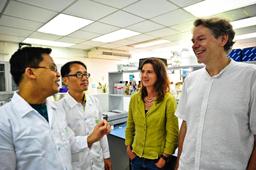 Gambling sometimes pays
Gambling sometimes pays
“We have now hit the jackpot and found PSTOL1 – the major gene responsible for improved phosphorus uptake – and understand how it works,” says Dr Heuer. PSTOL stands for stands for phosphorus starvation tolerance, and is one of 68 initially predicted putative genes in the locus that project scientists had tagged as Pup1 – short for ‘phosphorus uptake 1’.
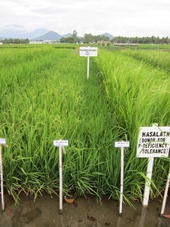 But it has been an epic journey and a long hard road getting there. The odyssey began in 1999, when Dr Matthias Wissuwa (who is now a researcher at JIRCAS) was a European Union fellow at Japan’s National Institute of Agrobiological Sciences (NIAS). The first breakthrough came about a decade ago, when Dr Wissuwa, then working in Japan, first discovered that an Indian rice variety, Kasalath, must have a gene that helps it thrive in low-phosphorus soils – a fact scientists already knew, even if they did not know the exact gene behind this. “What’s exciting about PSTOL1 is that it really does something positive in the field,” says Dr Wissuwa. “An early question we grappled with was whether better phosphorus uptake spurs root growth, or is it the other way round?” It’s a chicken-and-egg conundrum, but either way, a mechanism which favours phosphorus uptake results in improved root growth. A better root system is also beneficial under drought stress, which is GCP’s key focus.
But it has been an epic journey and a long hard road getting there. The odyssey began in 1999, when Dr Matthias Wissuwa (who is now a researcher at JIRCAS) was a European Union fellow at Japan’s National Institute of Agrobiological Sciences (NIAS). The first breakthrough came about a decade ago, when Dr Wissuwa, then working in Japan, first discovered that an Indian rice variety, Kasalath, must have a gene that helps it thrive in low-phosphorus soils – a fact scientists already knew, even if they did not know the exact gene behind this. “What’s exciting about PSTOL1 is that it really does something positive in the field,” says Dr Wissuwa. “An early question we grappled with was whether better phosphorus uptake spurs root growth, or is it the other way round?” It’s a chicken-and-egg conundrum, but either way, a mechanism which favours phosphorus uptake results in improved root growth. A better root system is also beneficial under drought stress, which is GCP’s key focus.
Impact…and the power of productive partnerships
The discovery of the PSTOL1 gene means that rice breeders will be able to breed new rice varieties faster and more easily using molecular markers, which ensure that selected plants will indeed have this valuable phosphorus-giving gene. This will go a long way towards meeting the project’s goal to contribute to improving rice in Asia, and going well beyond the immediate project partners.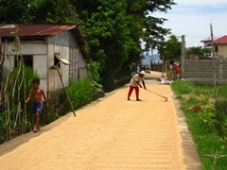
Farmers can expect to receive the first such rice varieties within a few years. Working with partners in Indonesia, the aim will be to breed varieties identical to those that farmers already know and trust, except that they will now have the PSTOL1 gene and an improved ability to take up soil phosphorus.
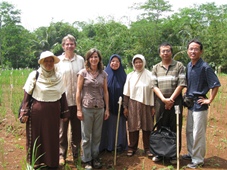 ICABIOGRAD is already breeding rice plants with the PSTOL1 gene. “The plants are not genetically modified: just bred using smart modern breeding techniques,” reveals Dr Joko Prasetiyono, an ICABIOGRAD molecular breeder. “In this case, we used marker-assisted selection, with close guidance from IRRI.” ICABIOGRAD partners with the Indonesian Centre for Rice Research (ICRR) to identify phosphorus-deficient hotspots for testing the breeding material, choose the best recipient rice varieties for the gene, and conduct the breeding.
ICABIOGRAD is already breeding rice plants with the PSTOL1 gene. “The plants are not genetically modified: just bred using smart modern breeding techniques,” reveals Dr Joko Prasetiyono, an ICABIOGRAD molecular breeder. “In this case, we used marker-assisted selection, with close guidance from IRRI.” ICABIOGRAD partners with the Indonesian Centre for Rice Research (ICRR) to identify phosphorus-deficient hotspots for testing the breeding material, choose the best recipient rice varieties for the gene, and conduct the breeding.
And impact is not limited to Indonesia: according to Dr Wricha Tyagi of the School of Crop Improvement at the Central Agricultural University in Meghalaya, India, knowledge of the exact gene will be critical for future breeding programmes suited to eastern and northeastern India where rice productivity is less than 40 percent of the national average due to acidic soils and poor availability of phosphorus. “We have screened Pup1-based markers on a set of about 75 rice genotypes and found Kasalath-like haplotypes in local and improved varieties adapted to these regions,” explains Dr Tyagi.
 "This research is a landmark achievement that includes both sophisticated basic research to understand the mechanism of phosphorus-uptake efficiency, as well as developing the improved varieties with better roots to absorb more phosphorous,” says Dr Rajeev Varshney, GCP’s Comparative and Applied Genomics Leader. “GCP is proud of this long-term investment in this exciting IRRI-led research which has borne fruit. Cloning the PSTOL1 gene has only been possible due to dedicated hard work by the project team, particularly, IRRI, JIRCAS and ICABIOGRAD."
"This research is a landmark achievement that includes both sophisticated basic research to understand the mechanism of phosphorus-uptake efficiency, as well as developing the improved varieties with better roots to absorb more phosphorous,” says Dr Rajeev Varshney, GCP’s Comparative and Applied Genomics Leader. “GCP is proud of this long-term investment in this exciting IRRI-led research which has borne fruit. Cloning the PSTOL1 gene has only been possible due to dedicated hard work by the project team, particularly, IRRI, JIRCAS and ICABIOGRAD."
Dr Jean-Marcel Ribaut, the GCP Director, notes, “This project exemplifies the ideal three-way partnerships GCP promotes, with the added benefit of a continuity of new and long-term collaborators. Here, we have a CGIAR Centre working with partners in both developing and developed countries, leading to a product that is of benefit to developing countries and meets a real need: this discovery will have significant impact on rice production, especially in rice-growing areas with acidic soils and poor availability of phosphorus.” 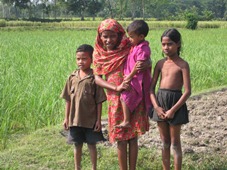
Besides the three main partners mentioned above (IRRI, JIRCAS and ICABIOGRAD working with ICRR) and NIAS, other partners that have been involved along the way, or provided information, include Italy’s University of Milano, Germany’s Max Planck Institute in Golm, the University of The Philippines at Los Baños, USA’s Cornell University and University of California (Davis and Riverside), Brazil’s EMBRAPA, Africa Rice Center, Iran’s Agricultural Biotechnology Research Institute, Australia’s Commonwealth Scientific and Industrial Research Organisation (CSIRO) and Dhaka University in Bangladesh.
The work done by the team is summarised in a Nature article published today entitled The protein kinase PSTOL1 from traditional rice confers tolerance of phosphorus deficiency.
"Publication in this high-impact journal validates the efficacy of GCP’s two-dimension research strategy coupling upstream high-quality science with applied aspects linked to breeding and, ultimately, farmers. I would once again like to applaud the team’s hard work and excellence," concludes Dr Varshney.
Links ![]() PDF version | Photo-story version in Flickr or Facebook | VIDEO: short clip on BBC World News | AUDIO: Podcast | Improving rice in Asia |
This email address is being protected from spambots. You need JavaScript enabled to view it.
| Funders | IRRI media release
PDF version | Photo-story version in Flickr or Facebook | VIDEO: short clip on BBC World News | AUDIO: Podcast | Improving rice in Asia |
This email address is being protected from spambots. You need JavaScript enabled to view it.
| Funders | IRRI media release
Related blogposts: S Heuer (IRRI) | J Prasetiyono (ICABIOGRAD) | M Wissuwa (JIRCAS)
A boon to bean breeding in the tropics
- Published Date
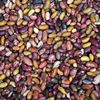
Scaling to thousands: A first ever for beans, BeanCAP’s landmark donation will greatly accelerate the quest for better beans
| BELTSVILLE (MD), USA – The Bean Coordinated Agricultural Project (BeanCAP) is pleased to announce the release – into the public domain – of the first instalment of resources to boost molecular breeding in common beans. BeanCAP is releasing to the Generation Challenge Programme (GCP) of the Consultative Group on International Agricultural Research (CGIAR) information on more than 1,575 bean SNPs that will broaden the genetic tools available to developing-country bean breeders. |
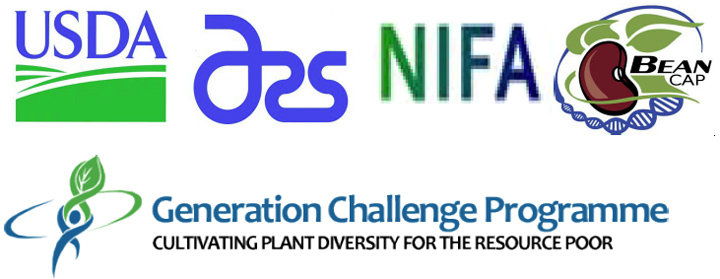
FOR IMMEDIATE RELEASE TO MARK WORLD FOOD DAY ON 16 OCTOBER
MEDIA RELEASE – 14 October 2011
A boon to bean breeding in the tropics
Scaling to thousands: A first ever for beans, BeanCAP’s landmark donation will greatly accelerate the quest for better beans
BELTSVILLE (MD), USA – The Bean Coordinated Agricultural Project (BeanCAP) is pleased to announce the release – into the public domain – of the first instalment of resources to boost molecular breeding in common beans. BeanCAP is releasing to the Generation Challenge Programme (GCP) of the Consultative Group on International Agricultural Research (CGIAR) information on more than 1,575 bean SNPs that will broaden the genetic tools available to developing-country bean breeders. ‘SNPs’ (pronounced ‘snips’) is a technical term, and the abbreviation is derived from ‘single nucleotide polymorphism’ – an advanced molecular-marker system widely used in genetic science, but SNPs have not been available in critical amounts to bean breeders until this landmark release. By reducing not only time but also cost, the use of SNPs for molecular breeding greatly increases the efficiency of crop breeding. This means it has high potential for improving food production in the tropics by developing new varieties better adapted to increasing environmental challenges.
Common beans (Phaseolus vulgaris L) comprise the world’s most important food legume, feeding about 375 million people in Latin America and 200 million people in sub-Saharan Africa. Their nutritional value is so high, they have been called ‘a near-perfect food’. They are also easy to grow, adapting readily to different cropping systems and maturing quickly.
The USA BeanCAP team of plant breeders and geneticists is led by Dr Phil McClean, BeanCAP Project Director, and Researcher at North Dakota State University. The SNP marker development and evaluation was conducted by Dr Perry Cregan, a BeanCAP team member, and legume Research Leader at the Agricultural Research Service of the United States Department of Agriculture (USDA–ARS) in Beltsville, Maryland. “These SNPs were evaluated on 384 bean cultivars, including cultivars of Mesoamerican and Andean origin,” clarified Dr Cregan. “The SNPs donated to GCP fall into two groups: one selected to function well in the Mesoamerican and the other in Andean germplasm. Both sets will be suitable for applications in the breeding of tropical bean germplasm.”
The development of SNPs and other genetic marker technologies and their application in plant breeding have dramatically shrunk the time and cost required for developing new genetically improved plant varieties. “The BeanCAP team is particularly pleased that the SNP genetic markers we are developing and applying will rapidly find their way to applications in common bean breeding in developing countries where common beans are such an important dietary component,” added Dr Cregan.
“This transfer is consistent with the USDA Feed the Future commitment to be actively engaged in global food security efforts,” Dr McClean observed “It supports the research objective to seek gains in productivity through adoption of improved technologies that will promote development of more nutritious, environmentally sustainable and climate-resilient crops. Transfer of these molecular markers is consistent with a USDA strategy that envisions outcomes that will deliver scientific breakthroughs, and research to promote adoption of the best science through links with private-sector research partners and international agencies.”
BeanCAP will partner with GCP to aid in the dissemination of the SNPs to developing-country researchers. "GCP works with a wide network of partners within and outside the CGIAR system, and this should ensure broad dissemination of these new bean resources to researchers across the world, particularly in the global South," said Dr Xavier Delannay, Leader of Integrated Crop Breeding at GCP. “The BeanCAP SNPs are a welcome and much-needed resource for bean molecular breeding since sufficient SNPs had not been previously available for this critical food crop.”
In collaboration with the International Center for Tropical Agriculture (CIAT, by its Spanish acronym), GCP will handle the conversion of the SNPs received from BeanCAP to the KBioscience KASPar platform, which facilitates the high-throughput application of SNP markers in breeding programmes. The SNPs will be available through the Marker Services that GCP offers as part of its Integrated Breeding Platform, a public web-based one-stop shop for information, analytical tools and related services to design and efficiently conduct molecular-assisted breeding experiments (www.generationcp.org/ibp). Developing countries stand to benefit from this donation since BeanCAP is making these SNPs available to GCP without any restrictions.
GCP is coordinating a number of initiatives aimed at increasing the integration of molecular markers into developing-country breeding programs, in order to accelerate the development of improved varieties better-adapted to drought and other challenges. Due to their low cost and high-throughput potential, it is critical to expose breeders in developing countries to marker technologies as a valuable additional asset in their toolbox for enhancing crop productivity in drought-prone environments.
“Ensuring the availability of a sufficient quantity of SNPs for the main food crops in developing countries continues to be a key priority for GCP, and this collaboration with BeanCAP will enable us to fulfil this goal for common beans,” adds Dr Delannay. “It will directly boost the capacity of GCP-supported bean projects, such as those initiated through GCP’s Tropical Legumes I [TLI] project focussing on Africa, and mainly funded by the Bill & Melinda Gates Foundation. It will also be beneficial to many other bean-breeding programs in the developing world.”
Implemented by CIAT in collaboration with local partners, the bean work in TLI targets Ethiopia, Kenya, Malawi, Tanzania and Zimbabwe. In addition, GCP also funds bean research in Latin America (Mexico and Nicaragua) implemented by country partners from national programmes in close collaboration with CIAT.
For more details, please contact This email address is being protected from spambots. You need JavaScript enabled to view it. or This email address is being protected from spambots. You need JavaScript enabled to view it. .
About BeanCAP
BeanCAP is funded by the USDA’s National Institute of Food and Agriculture (NIFA) and includes collaborations of bean researchers from six state universities and five USDA–ARS locations. BeanCAP’s major objectives are: 1) discovery of genetic markers associated with common bean nutritional traits as well as disease and environmental stresses that impact bean productivity, and, 2) application of genetic marker technology to rapidly develop bean varieties with improved nutritional traits and resistance to disease and other stresses that reduce productivity.
The BeanCAP research fits well with ‘Feed the Future’ – a joint effort of the US Department of State, the US Agency for International Development (USAID) and the USDA to leverage investments by the USDA in research that benefits US agriculture in new ways and that can also benefit developing-country farmers. Major crop diseases are key examples where ‘dual-use’ technologies can have broad applicability. US farmers benefit because overseas research partnerships provide important first-line defences or early warnings against new types of plant pests and emerging diseases.
About the CGIAR Generation Challenge Programme (GCP)
Created by the Consultative Group on International Agricultural Research (CGIAR) in 2003 as a time-bound 10-year Programme, the mission of the CGIAR Generation Challenge Programme (GCP) is to use genetic diversity and advanced plant science to improve crops by adding value to breeding for drought-prone and harsh environments. This is achieved through a network of more than 200 partners drawn from CGIAR Centres, academia, regional and national research programmes, and capacity enhancement to assist developing-world researchers to access technologies and to tap into a broader and richer pool of plant genetic diversity.
GCP’s workplan for Phase II (2009–2014) is building on a set of seven crop-and region-specific Research Initiatives (RIs) focusing on drought tolerance for nine key crops, and on an integrated service component. While the RIs aim to demonstrate – through selected user cases – that modern and integrated breeding approaches can have a significant impact on crop productivity in developing countries, the service component (the Integrated Breeding Platform, [IBP]) is conceived as a vehicle for dissemination of knowledge and technology, enabling broad access to and proactive distribution of crop genetic stocks and breeding material; molecular, genomics and informatics technology and information; cost-effective high-throughput laboratory services; and capacity building programmes.
New genomic resources for maize breeding
- Published Date

Texcoco, Mexico – The CGIAR Generation Challenge Programme (GCP) announced today that it has received a major donation of maize genetic resources comprised of a portion of the Maize Allelic Diversity platform developed by Syngenta. This will now be available to researchers worldwide through the International Maize and Wheat Improvement Center (CIMMYT). The Syngenta Foundation for Sustainable Agriculture (SFSA) played a key role in facilitating the donation.![]() Download PDF | HTML
Download PDF | HTML
Media Release – 29 February 2012
New genomic resources for maize breeding
Syngenta’s donation of a transgenic-free allelic diversity platform will accelerate maize breeding
Texcoco, Mexico – The CGIAR Generation Challenge Programme (GCP) announced today that it has received a major donation of maize genetic resources comprised of a portion of the Maize Allelic Diversity platform developed by Syngenta. 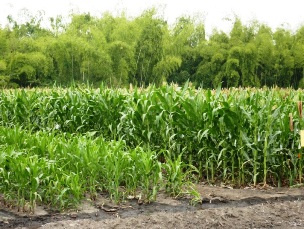 This will now be available to researchers worldwide through the International Maize and Wheat Improvement Center (CIMMYT). The Syngenta Foundation for Sustainable Agriculture (SFSA) played a key role in facilitating the donation.
This will now be available to researchers worldwide through the International Maize and Wheat Improvement Center (CIMMYT). The Syngenta Foundation for Sustainable Agriculture (SFSA) played a key role in facilitating the donation.
"This donation is very opportune for public research: and because producing this kind of genetic material needs several generations, and takes a considerable amount of time and resources, this donation represents a unique tool to boost identifying new alleles to improve maize worldwide," observes Dr Jean-Marcel Ribaut, GCP Director. "Our broad network of partners, particularly CIMMYT with a global mandate, will ensure wide distribution and impact, especially in developing countries."
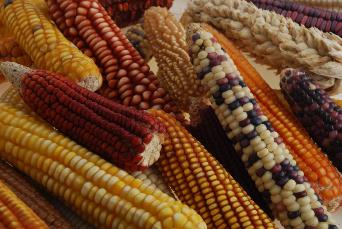 Current breeding methods have seen a continued rise in maize yields, making it the largest crop in the Americas, with an annual production of over 600 million tons, of about 867.5m tons worldwide. Additionally, emerging science is opening new avenues to help researchers understand and improve crops. Novel strategies for identifying genes and quantitative trait loci (QTLs) are proving successful. However, quantitative validation of these discoveries for predictive use remains difficult mainly because they are often made in a single genetic background in non-elite germplasm. Precise introgression of discrete chromosomal segments from selected lines into varied genetic backgrounds helps to overcome this hurdle. Consequently, the Syngenta Maize Allelic Diversity Platform was developed to provide a catalogue of material in elite near-isogenic backgrounds that could be queried and evaluated for effects in phenotypic variation. The allelic diversity panel donated currently comprises 1,282 near-inbred lines derived from 18 donors (diverse inbreds and landraces) crossed with B73, a publicly accessible maize line used as a reference line in a lot of genetic studies. Each inbred has been verified for freedom from adventitious presence of transgenic events. Valid requests will be honoured with 12 seeds per accession to ensure a sufficient supply for the widest distribution. A limited fee may also be charged for each request to recover logistics costs.
Current breeding methods have seen a continued rise in maize yields, making it the largest crop in the Americas, with an annual production of over 600 million tons, of about 867.5m tons worldwide. Additionally, emerging science is opening new avenues to help researchers understand and improve crops. Novel strategies for identifying genes and quantitative trait loci (QTLs) are proving successful. However, quantitative validation of these discoveries for predictive use remains difficult mainly because they are often made in a single genetic background in non-elite germplasm. Precise introgression of discrete chromosomal segments from selected lines into varied genetic backgrounds helps to overcome this hurdle. Consequently, the Syngenta Maize Allelic Diversity Platform was developed to provide a catalogue of material in elite near-isogenic backgrounds that could be queried and evaluated for effects in phenotypic variation. The allelic diversity panel donated currently comprises 1,282 near-inbred lines derived from 18 donors (diverse inbreds and landraces) crossed with B73, a publicly accessible maize line used as a reference line in a lot of genetic studies. Each inbred has been verified for freedom from adventitious presence of transgenic events. Valid requests will be honoured with 12 seeds per accession to ensure a sufficient supply for the widest distribution. A limited fee may also be charged for each request to recover logistics costs.
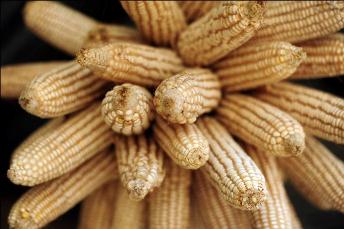 “Our hope is that the breeding programmes resulting from this donation will also help smallholder farmers,” says Dr Mike Robinson, Chief Science Advisor at the Syngenta Foundation. “Maize is a key crop in many developing countries. Yields need to rise significantly there in order to improve food security. That is why we donated the funding required to test and multiply the maize lines made available by Syngenta.”
“Our hope is that the breeding programmes resulting from this donation will also help smallholder farmers,” says Dr Mike Robinson, Chief Science Advisor at the Syngenta Foundation. “Maize is a key crop in many developing countries. Yields need to rise significantly there in order to improve food security. That is why we donated the funding required to test and multiply the maize lines made available by Syngenta.”
As a means to facilitate this, SFSA explicitly requires and encourages unencumbered reporting of scientific findings related to the use of the donated materials. Those who access the genetic resources donated by Syngenta will agree not to obtain intellectual property rights on the material or knowledge gained through their use of the donated materials.
"We are delighted to have access to these resources,” says Dr Kevin Pixley, CIMMYT’s Director of Genetic Resources. “The plant material will greatly aid researchers to identify alleles relevant for maize breeding."
- For more information, please contact This email address is being protected from spambots. You need JavaScript enabled to view it.
- Rapid facts and figures on maize
GCP is a CGIAR Challenge Programme created in 2003 as a time-bound 10-year initiative. Its mission is to use genetic diversity and advanced plant science to improve crops by adding value to breeding for drought-prone and harsh environments. This is achieved through a network of more than 200 partners drawn from CGIAR Centres and Programmes, academia, regional and national research programmes, and capacity enhancement to assist developing-world researchers to access technologies and to tap into a broader and richer pool of plant genetic diversity.
The Syngenta Foundation for Sustainable Agriculture creates value for resource-poor smallholder farmers in developing countries through innovation in sustainable agriculture and the activation of value chains. By helping smallholders become more professional growers, SFSA achieves added value for rural communities, and improves food security in sustainable ways. The Foundation is based in Basel, Switzerland, and operates in Africa, Asia and Latin America.
CIMMYT is a non-profit research and training CGIAR Centre headquartered in Mexico whose mission is to sustainably increase the productivity of maize and wheat systems to ensure global food security and reduce poverty.CIMMYT works with and brings together public research and extension organizations, private companies, advanced research institutes, NGOs, and farmer associations worldwide. This network is maintained by over 105 specialised research and 500 support staff from at least 40 countries, working on a yearly budget of about USD 50 million. The Center is funded by international and regional development agencies, national governments, private foundations and the private sector.
A powerful new partnership in plant science
- Published Date
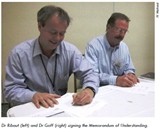
SAN DIEGO, CALIFORNIA, USA – The Generation Challenge Programme (GCP) of the Consultative Group on International Agricultural Research (CGIAR) and the iPlant Collaborative signed a joint Memorandum of Understanding (MoU) on 17 January 2011, in San Diego, California, USA. Under the terms of this MoU, iPlant will collaborate with GCP in developing GCP’s Integrated Breeding Platform (IBP), including hosting a team of GCP software engineers (see vacancy announcements for these positions). ![]() Download PDF | HTML
Download PDF | HTML

MEDIA RELEASE – 21 JANUARY 2011
A powerful new partnership in plant science
SAN DIEGO, CALIFORNIA, USA – The Generation Challenge Programme (GCP) of the Consultative Group on International Agricultural Research (CGIAR) and the iPlant Collaborative signed a joint Memorandum of Understanding (MoU) on 17 January 2011, in San Diego, California, USA.
Under the terms of this MoU, iPlant will collaborate with GCP in developing GCP’s Integrated Breeding Platform (IBP), including hosting a team of GCP software engineers (see vacancy announcements for these positions).
“IBP’s collaboration with iPlant is a winning combination,” said Dr Stephen Goff, iPlant’s Project Director. “The community and partnerships that the IBP brings together through GCP pools extensive global expertise in both conventional and molecular breeding technology.”
The IBP is mainly funded by the Bill & Melinda Gates Foundation. Other funders include the European Commission, and the UK’s Department for International Development (DFID). iPlant is funded by the National Science Foundation, USA.
“One of the biggest constraints to the successful deployment of molecular technologies in public plant breeding, especially in the developing world, is a lack of access to informatics tools to support sample tracking, breeding logistics, data management, analysis and decision support,” observed Dr Graham McLaren, IBP’s Project Manager. “The iPlant cyberinfrastructure [CI] will allow us to develop and deploy an Integrated Breeding Workbench which will be configurable to different breeding workflows and provide the informatics support and analytical pipeline required for integrated breeding. In addition, the collaboration will give breeders throughout the world access to the products of upstream biological research necessary for effective molecular breeding.”
iPlant will benefit from close interactions with the highly experienced breeders from the international Centres of the CGIAR, while IBP will gain by building on the iPlant CI platform that many plant biology researchers will use for discovery research. iPlant collaborators will also benefit by gaining access to the users in the CGIAR and academic research organisations interested in supporting the humanitarian applications of the IBP, and to rich biological data which will be accessible through the iPlant CI for collaborative biological research. Taken together, such a coordinated effort will be mutually advantageous.
For more than a decade, the CGIAR and other partners have been working on developing the International Crop Information System (ICIS) and a fieldbook system for maize breeding. These systems will now be updated and merged for compatibility with iPlant’s CI platform, and to be scalable to the CGIAR’s new needs. iPlant is building a software developer toolkit (SDK) and application programming interfaces (APIs) and will work closely with IBP developers to facilitate building IBP’s Integrated Breeding Workbench on the iPlant CI.
“The Workbench and its data will be valuable components of iPlant’s Grand Challenge Project on correlating genotypic variation with phenotypic variation,” said Dr Goff.
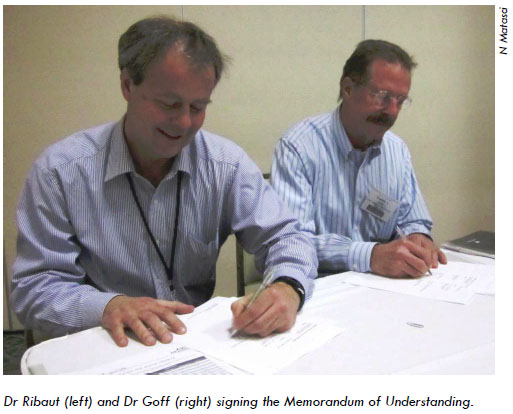 Targeted for priority development are tools for a Breeding Management System; tools for a Field Trial Management System including an Integrated Breeding Fieldbook; and tools for a Decision Support System including a Molecular Breeding Design Tool, a Cross Prediction Tool and a tool for marker-assisted recurrent selection (MARS).
Targeted for priority development are tools for a Breeding Management System; tools for a Field Trial Management System including an Integrated Breeding Fieldbook; and tools for a Decision Support System including a Molecular Breeding Design Tool, a Cross Prediction Tool and a tool for marker-assisted recurrent selection (MARS).
Dr Goff concluded, “Together, IBP and iPlant's efforts will create synergy between breeders, crop genetics and genomics experts, and computational experts to help drive state-of-the-art plant science discovery into applications that will greatly benefit humanity around the globe.”
The MoU was signed by Dr Jean-Marcel Ribaut, GCP Director, on behalf of GCP, and by Dr Goff for iPlant (see picture).
For more information, please contact This email address is being protected from spambots. You need JavaScript enabled to view it. (IBP) and This email address is being protected from spambots. You need JavaScript enabled to view it. (iPlant).
About the CGIAR Generation Challenge Programme (GCP)
Created by the Consultative Group on International Agricultural Research (CGIAR) in 2003 as a time-bound 10-year Programme, the mission of the CGIAR Generation Challenge Programme (GCP) is to use genetic diversity and advanced plant science to improve crops by adding value to breeding for drought-prone and harsh environments. This is achieved through a network of more than 200 partners (as of 2009) drawn from CGIAR Centres, academia, regional and national research programmes, and capacity enhancement to assist developing world researchers to tap into a broader and richer pool of plant genetic diversity. In this way, GCP strives to ensure that crops improved by cutting-edge research will reach farmers in the developing world. In Phase I (2004–2008), GCP worked on 18 crops, while in Phase II (2009–2013), the main focus is on improving seven key crops for drought-tolerance.
Funding: GCP’s annual budget of about USD 15 million is supported by the generosity of various funders, most coming through the CGIAR. In Phase I, our major funders were the European Commission, the UK’s Department for International Development and the World Bank. The Bill & Melinda Gates Foundation has become a major funder In Phase II, alongside these three continuing funders. Collectively, the four contribute about 90 percent of GCP’s total income.
About iPlant
The iPlant Collaborative, a virtual organization, is building cyberinfrastructure to empower plant scientists, bioinformaticians, and computing experts to tackle grand challenges in plant biology. Cyberinfrastructure unites high-end computing, large scale data storage, networking, software tools, and people to enable new exploration and knowledge discovery. iPlant’s cyberinfrastructure products will simplify how researchers and software developers bring together their data and tools to enable new conceptual advances through computational thinking and analysis.
Funding: The iPlant Collaborative is funded by a grant from the National Science Foundation Plant Cyberinfrastructure Program (#DBI-0735191).


